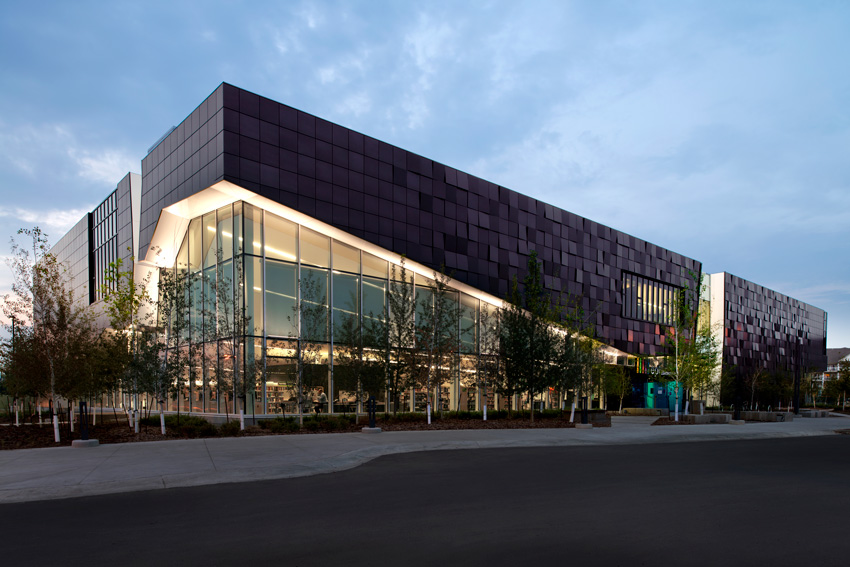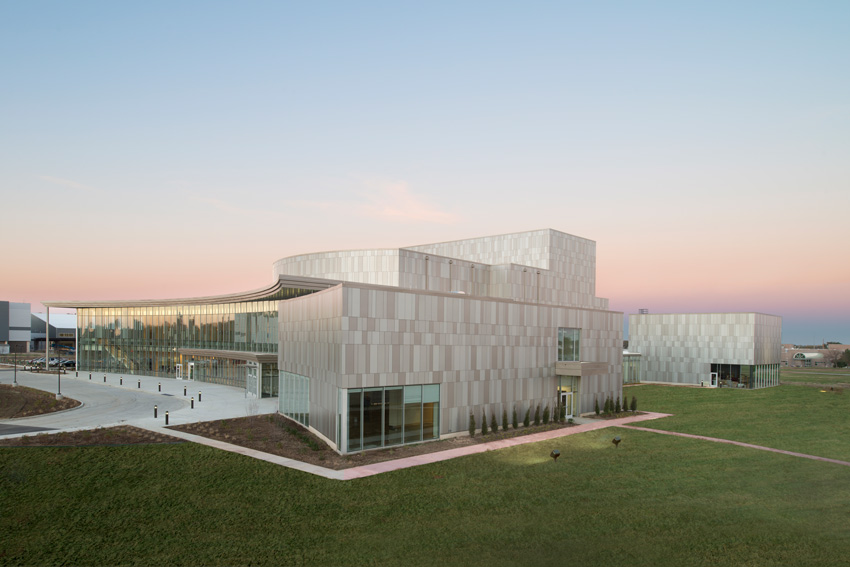Form and Function
Learning Objectives:
- Distinguish the unique attributes of single-skin metal panels, and explore the common metals and finishing options available.
- Examine which single-skin metal panel system specifications will best achieve project needs of life cycle, maintenance, and cost.
- Describe the testing methods established by the American Architectural Manufacturers Association (AAMA) for both drained/back-ventilated and pressure-equalized rainscreen systems, and compare report data for both to better understand system performance.
- Apply testing data on combustibility, air, water, structural, and hurricane performance to ensure selection of the most qualified product.
- Discuss the environmental and life-cycle benefits of single-skin metal panels, including fossil fuel reduction, maintenance, and recyclability.
Credits:
This course is approved as a Structured Course
This course can be self-reported to the AANB, as per their CE Guidelines
Approved for structured learning
Approved for Core Learning
This course can be self-reported to the NLAA
Course may qualify for Learning Hours with NWTAA
Course eligible for OAA Learning Hours
This course is approved as a core course
This course can be self-reported for Learning Units to the Architectural Institute of British Columbia
Budget. Use and occupancy. Environmental certifications. Life-cycle costs. Maintenance. Durability. Sustainability. Aesthetics. The list of factors impacting a design professional’s decision-making for each project is overwhelming. The construction and design markets have responded to this need with a wider and deeper array of products, yet the increasingly complex specifications and diverse performance criteria for each product can potentially hinder, rather than help, material selection.

Photo courtesy Dri-Design, Inc.
Modern buildings demand a material that performs well while also looking clean and contemporary.
Metal, with its unique attributes, offers both a natural and highly customizable solution for the design professional. When crafted into single-skin metal panels, metal offers a 100 percent recyclable, pressure-equalized rainscreen, architectural metal wall system that attaches to nearly any substrate without the use of clips or extrusions. Made from a single solid piece of metal, single-skin metal panels are noncombustible. Since the panels are not laminated, or of a composite material, panels will never delaminate. Further reducing maintenance, single-skin metal panels do not require joint sealants, gaskets, or butyl tape, and therefore eliminate the staining and maintenance associated with those systems. Single-skin metal panels are manufactured efficiently and install faster than comparable products, saving time and money.
Today’s materials must also perform. Leading manufacturers’ single-skin metal panels pass the most stringent air, water, and structural testing requirements in the industry, including the American Architectural Manufacturers Association (AAMA) 508-07 test for pressure-equalized rainscreens, as well as Miami-Dade County hurricane testing.
As a building material, metal offers a perfect intersection for form and function. To ensure a best fit for each project, however, understanding specifications, testing, and requirements is vital.

Photo courtesy Dri-Design, Inc.
The Bicknell Family Center for the Arts at Pittsburg State University showcases the aesthetic appeal of single-skin metal panels.
DEFINING THE USE OF METAL IN EXTERIOR APPLICATIONS
The first substantial application of metal cladding occurred on the Crystal Palace of London in 1851. Then, beginning in 1930, aluminum began to be used more frequently as cladding. One of the earliest examples was an aluminum cladding installation on the Federal Reserve Building in Pittsburgh.
The single-skin metal panel system is one of many options for exterior metal systems in wall assembly principles, panel types, materials, and finishes.
Non-Single-Skin Metal Wall Panel Systems
Beyond single-skin metal panels, there are various metal wall panel types. The most common types in use today include metal composite material (MCM) panels, honeycomb core panels, and insulated metal panels (IMPs).
MCM Panels
MCM panel sheets are manufactured using two metal sheets, which most often sandwich a core of either extruded thermoplastic or polyethylene, although some manufacturers may use other core alternatives. The most common type of MCM is the aluminum composite material (ACM), commonly available in 4-millimeter and 6-millimeter thicknesses.
It is important to understand that the MCM manufacturers do not fabricate panels. Rather, they sell sheets of material to many different fabricators and metal shops. Panels are formed from MCM sheets with a variety of installation details, including both wet and dry joints. Due to the diversity in manufacturing and fabricating, some of the fabricated systems have been tested to industry standards, while many have not.
Advantages of MCM panels include the large sheet sizes, which enable creation of large panels measuring 20 feet in length or more. The MCM fabrication process minimizes oil canning in large panels when fabricated properly. Also, MCM material can be curved in many applications.
That said, there are several disadvantages with an MCM system. Since the material is laminated, there is potential for delamination and failure of the material. Installation can be labor intensive due to the more complicated systems involving many pieces and parts. Recycling is more difficult with MCM panels than for single-skin systems. Furthermore, MCM panels can have a significant environmental footprint. MCM panels made with LLDPE and LDPE plastics use the fossil fuel equivalent of manufacturing well over 100,000 plastic bottles to create the plastic core in 10,000 square feet of MCM.
Honeycomb Core Panels
The honeycomb core panel sheets consist of metal skins that are laminated to aluminum, kraft paper, or plastic honeycomb core material. Many panels use coil-coated aluminum skins, which can vary in material thickness. Typical panel thicknesses range from 1⁄4 inch to 3 inches.
Honeycomb core panels offer the design professional certain advantages. As with MCM fabrication, large sheet sizes are available to make large panels measuring 20 feet or greater in length. The honeycomb core panel fabrication process also minimizes oil canning in larger panels when fabricated properly. Disadvantages to the product include the potential for delamination and failure of the material since it is a composite system. Installation of honeycomb core panels can also be labor intensive because the system involves many pieces and parts. Given the combination of products within the system, recycling of the panels is more difficult than for single-skin systems.
IMPs
IMPs consist of rigid or injectable foam sandwiched between two sheets of metal. IMPs are most commonly found as part of a barrier wall assembly. IMPs can also act as a backup system for other architectural finishes, such as masonry, terra cotta, and architectural metal panels.
IMPs, as a system, have certain advantages. The insulation in the panels contributes to the R-Value of the wall assembly. The panels can act as their own weather barrier.
Disadvantages of IMPs can include the expense of production, as compared to single-skin panels. Furthermore, IMPs can be industrial looking and may not offer much flexibility in color and/or design.















